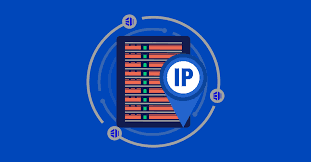7 Components of Human Resource Software Development

LIKE.TG 成立于2020年,总部位于马来西亚,是首家汇集全球互联网产品,提供一站式软件产品解决方案的综合性品牌。唯一官方网站:www.like.tg
The human resources (HR) department is key for every organization. They enable everyone to carry out their roles and responsibilities seamlessly.
The HR department has loads of responsibilities to fulfill, from managing employees’ information, recruitment, and hiring to evaluation and retention.
Efficient data management at each stage is required for the HR team to work at their optimum best. Wondering how this can be done seamlessly and reduce their burden? It’s high time to think about HRMS (Human Resource Management System). This software can lessen a lot of burden for the human resource department, such as paperwork management, employee management, and ensuring employee satisfaction.
HRMS effectively cuts down the excess amount of work and helps standardize the normal HR tasks. It actually helps save a lot of time by storing all data in one single place and structuring all the essential administrative tasks.
It saves time and effort by storing the complete information and data in one place only. Plus, it also helps in structuring administrative tasks.
That’s why organizations have shown their interest in adopting such software. It’s worth mentioning that global human resource technology is projected to grow from $24.04 billion in 2021 to $35.68 billion in 2028 at a CAGR of 5.8%.
Before moving ahead, let’s understand what human resource software is.
An Overview of Human Resource Software
The human resource software is also called human resource management systems (HRMS) or human capital management (HCM) software.
It is basically all-in-one software, which enables management to perform several functions. The main purpose of this specialized software is to increase the productivity and efficiency of HR activities by consolidating data and automating manual & repetitive tasks.
How to know if you need Human Resource Software?
Is the HR department of your growing business finding it difficult to carry out day-to-day operations? Do you feel the need for a centralized system for streamlining HR operations? If so, then you need to invest in human resource software.
Sometimes it can be tricky to determine if you need HR software or not. Here’s a small list of situations in which HR software might be the perfect addition to your list of tools.
-
If your employees work in different locations and there’s no one-stop employee communication platform to communicate with each other, you should invest in custom software development services.
-
If the workload of the HR department is too high and they do not have enough time to manage all the tasks, then you should consider a human resource software solution.
-
If you can’t manage applications, on-boardings, and payrolls efficiently, then it’s high time to pick one of the best software development companies.
7 Components of Human Resource Software Development
If you have made up your mind to select the best human resource software, it is essential to have a software solution with full-fledged features that can meet your business needs. Let’s have a look at some of the must-have components of HRMS.
1. Payroll management
One of the core features should be payroll management in an HRMS. Undeniably, there is a growing workforce all over the world. Hence, there is a high demand for this.
The primary function of payroll management is to calculate and pay salaries along with taxes and deductions and manage the printing of paychecks. The HR team can track employees’ wages and salary rates, issue cheques, and automatically run payroll. It also keeps account of allowances, overtime rates, etc. The best part about this is that it can reduce the risks of errors during payroll.
The automatic tax computation functionality of the payroll management feature helps you avoid errors in taxation. Moreover, automating payroll can offer even more great advantages, such as:
-
Tasks can be done with minimal time and effort.
-
No need to put manual data inputs.
-
Easy access to everything that you want to check in a fraction of a second.
Any inaccuracy in payroll can lead to a disaster for an organization. It is important that it should be well-managed. So, you should adopt this technology to minimize human errors and increase accountability in order to efficiently manage paychecks, control pay schedules, and ensure accuracy.
2. Analytics & document management
Talking about corporate data, human resource management is considered a vulnerable one. This is because such data includes the personal & financial details of employees. That’s why organizations should be careful about their sensitive data and information. An ideal HRMS comes with SSL systems and secure transmission of data, which encrypts all the information when it gets transferred over the Internet.
It also helps your organization to analyze information in real time and make the best decisions. Basically, it works on a data-driven approach. It includes images, messages, emails, electronic documents, files, MIS reports, document sharing, employee mood monitoring, and exit process management.
3. Onboarding
Onboarding is a process in which new employees are integrated into the organization. When it comes to the onboarding module of an HRMS, it automates the whole process of introducing new employees to their respective managers and teams. With less effort and minimal time, it can be done effectively. It also automates the onboarding processes like setting up user accounts, security access, entry passes, etc.
It cuts down the time and helps to be productive by automating lengthy paperwork. Therefore, new employees can start carrying out their responsibilities sooner.
4. Recruitment
Recruitment is one of the essential yet daunting tasks of the human resource department. Finding an ideal candidate with the right experience, attitude, and skill set is often challenging. Without an ATS the recruitment component is particularly designed to streamline the lengthy recruitment process. It helps with job postings, talent acquisition, the interviewing process, and the selection of suitable candidates.
5. Performance management
Now, the next must-have component of HRMS is the performance management system. It allows you to measure employee performance based on different parameters. You can set goals, and keep track of their progress and performance. The component organizes all the relevant information in one place. You can quickly evaluate the performance against the KPIs (Key Performance Indicators) assigned to the system.
6. Time tracking & leave management
This must-have component can store time information and generate reports, attendance, and leave records. It can also have employee self-service (ESS) functionality, which empowers employees to see their schedules, check-ins & check-outs, leave requests, and balances.
Retail and food-related businesses should not miss out on this component in their HRMS. Since, such businesses work on a shift basis, staying in touch with employees from various shifts becomes difficult for the management. With the help of HRMS, the communication between employers and employees gets streamlined. Ultimately, it leads to efficient workforce management. If you have more than 50 employees, then you should go with this since managing the attendance and leaves of a great number of employees can be a strenuous task. Better automate it to stay behind the hassles.
7. Benefits management
A must-have component in HRMS is benefits management. It helps with delivering benefits to employees, including extra perks, healthcare insurance, pension schemes, parental leaves, etc. This benefits administration module helps organizations streamline the whole process and tracks data for compliance purposes.
Conclusion
Undeniably, the HR department of every organization is packed with responsibilities. However, implementing a proven & modern solution like HRMS can help you provide more quality control and allow you to collaborate seamlessly with your employees.
It’s high time to invest in HR software solutions that best fit your needs. It not only helps your business grow faster but also makes your business efficient enough to stay ahead of the competition.
Now you have a good understanding of must-have components that every organization should invest in. If you think we've left some, then you can share it by commenting below. We’d like to hear from you!
About Author:
Hardik Shah is a Tech Consultant at Simform, a digital product engineering company. He leads large scale mobility programs that cover platforms, solutions, governance, standardization, and best practices. Connect with him to discuss the best practices of digital product engineering & cloud transformation @hsshah.

LIKE.TG 专注全球社交流量推广,致力于为全球出海企业提供有关的私域营销获客、国际电商、全球客服、金融支持等最新资讯和实用工具。免费领取【WhatsApp、LINE、Telegram、Twitter、ZALO】等云控系统试用;点击【联系客服】 ,或关注【LIKE.TG出海指南频道】、【LIKE.TG生态链-全球资源互联社区】了解更多最新资讯
本文由LIKE.TG编辑部转载自互联网并编辑,如有侵权影响,请联系官方客服,将为您妥善处理。
This article is republished from public internet and edited by the LIKE.TG editorial department. If there is any infringement, please contact our official customer service for proper handling.


















